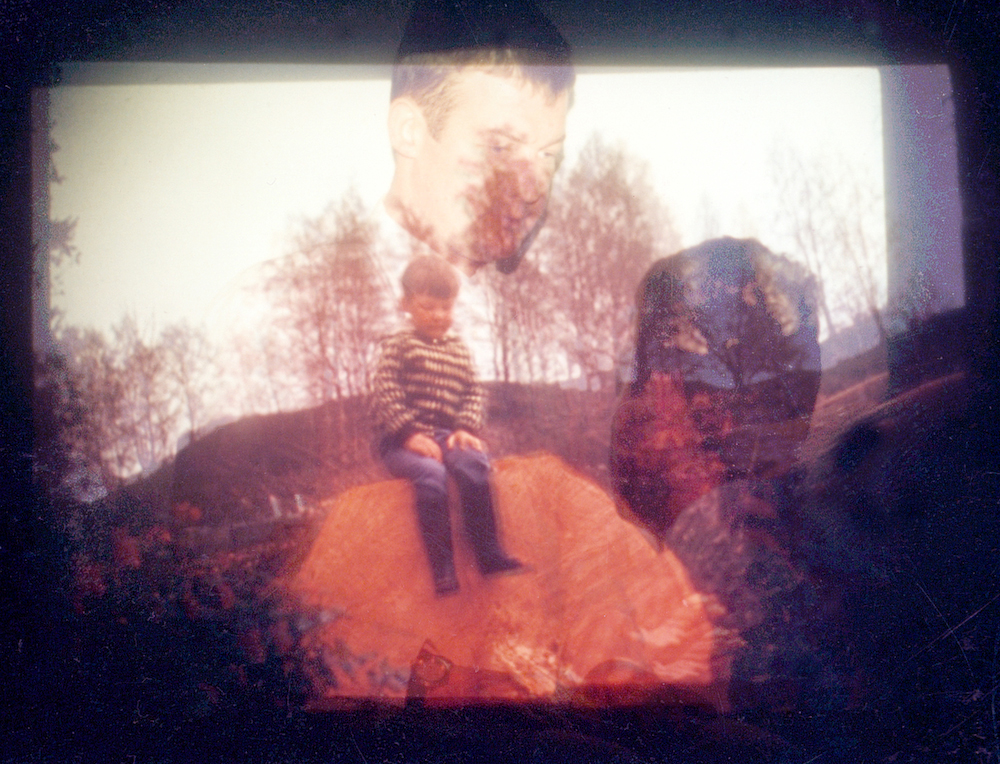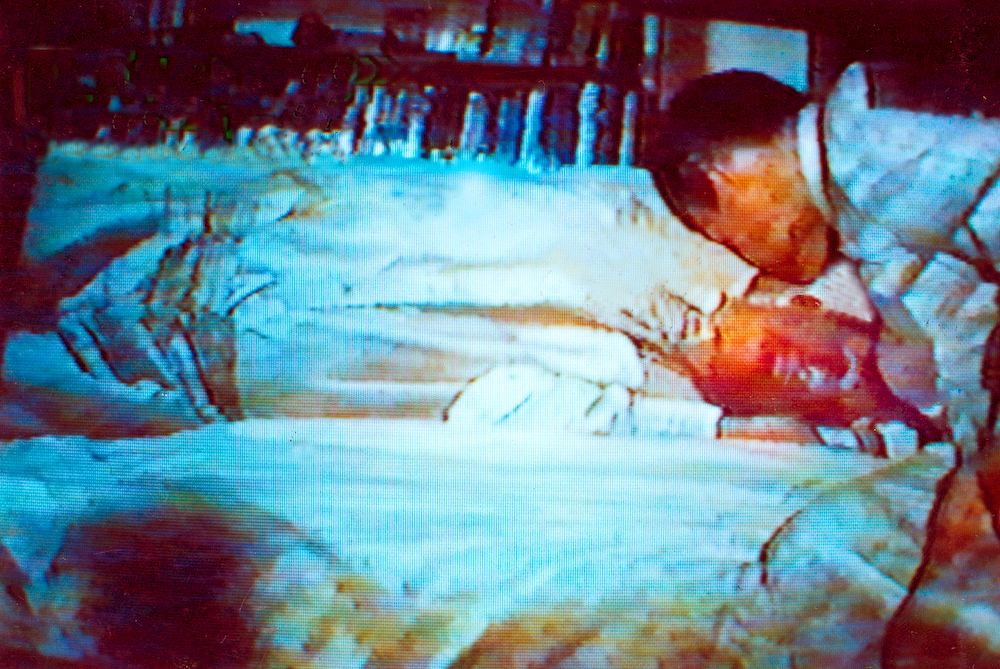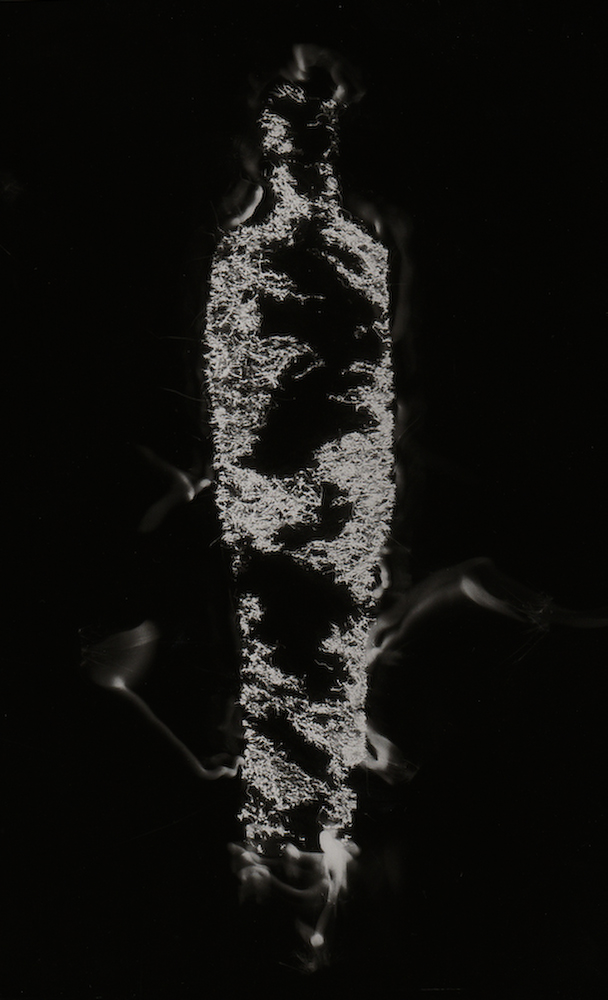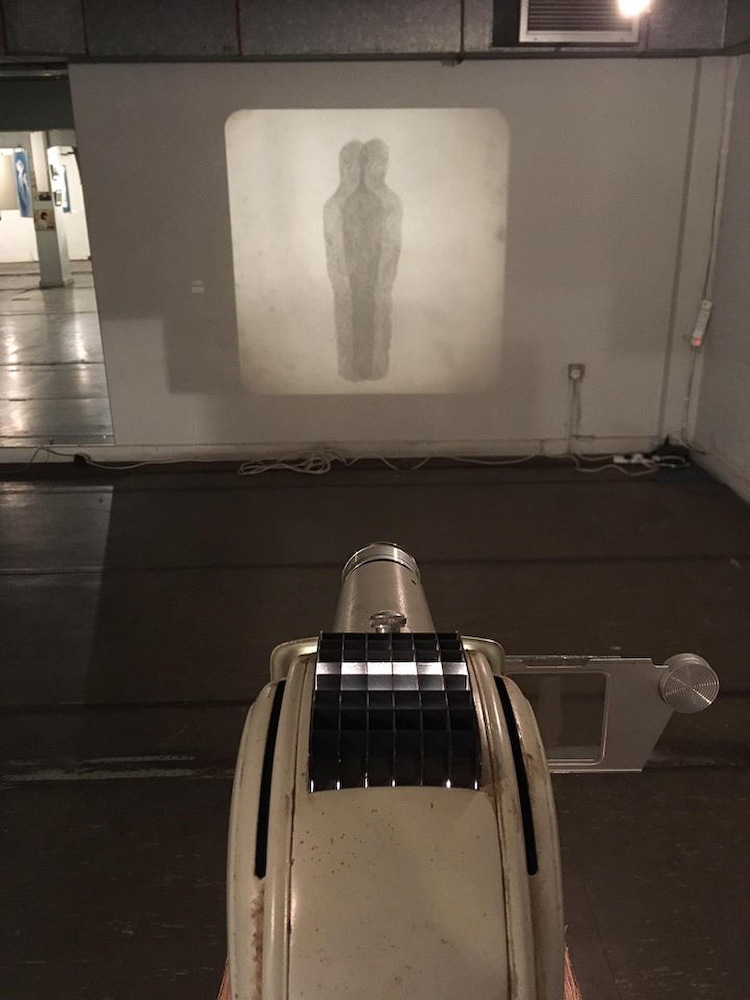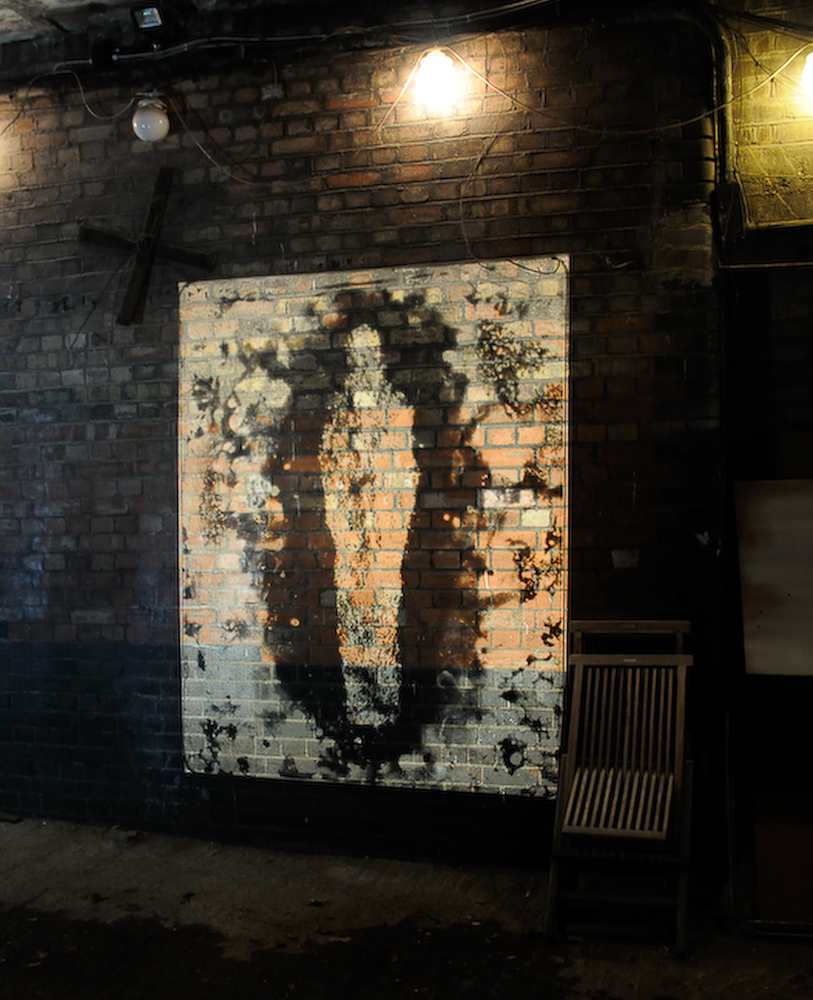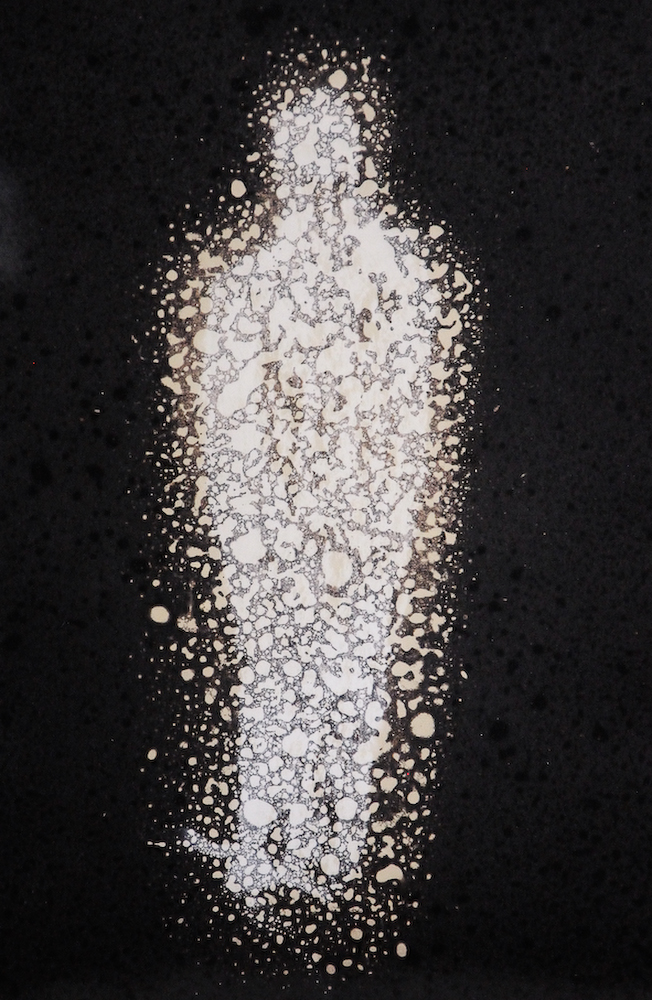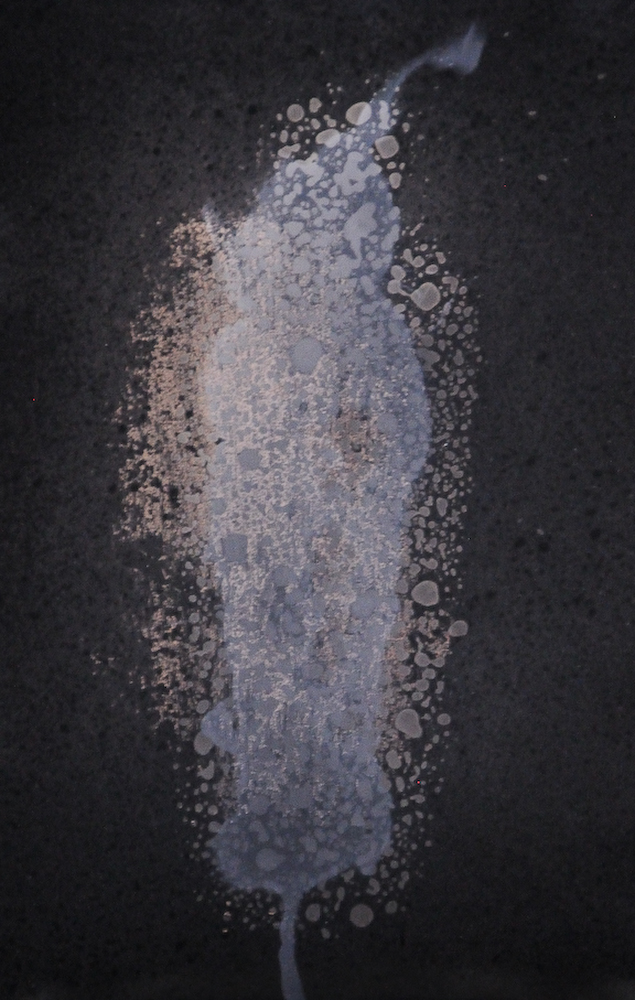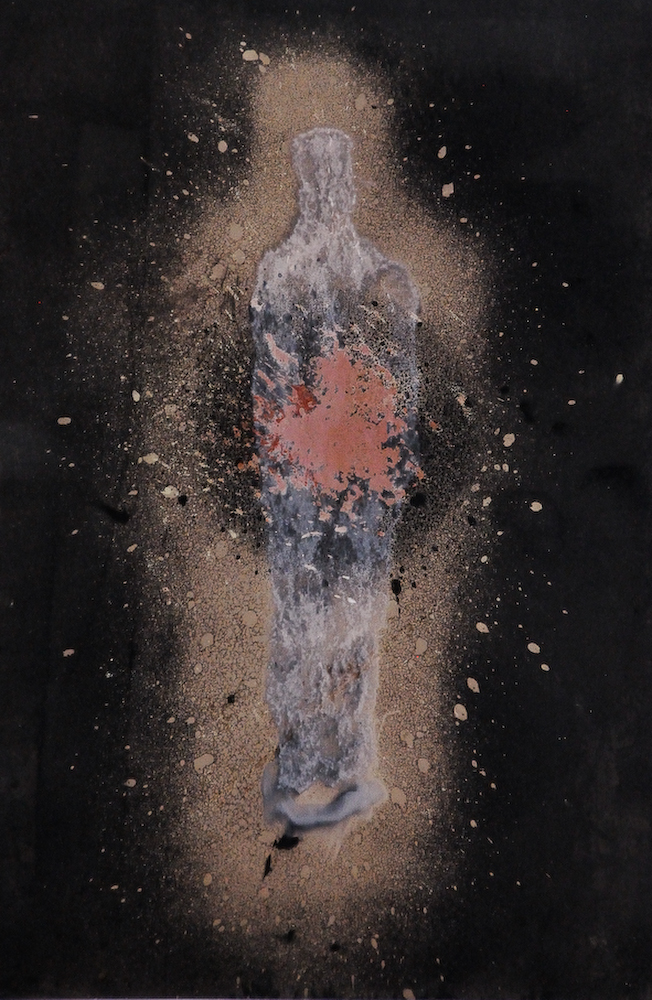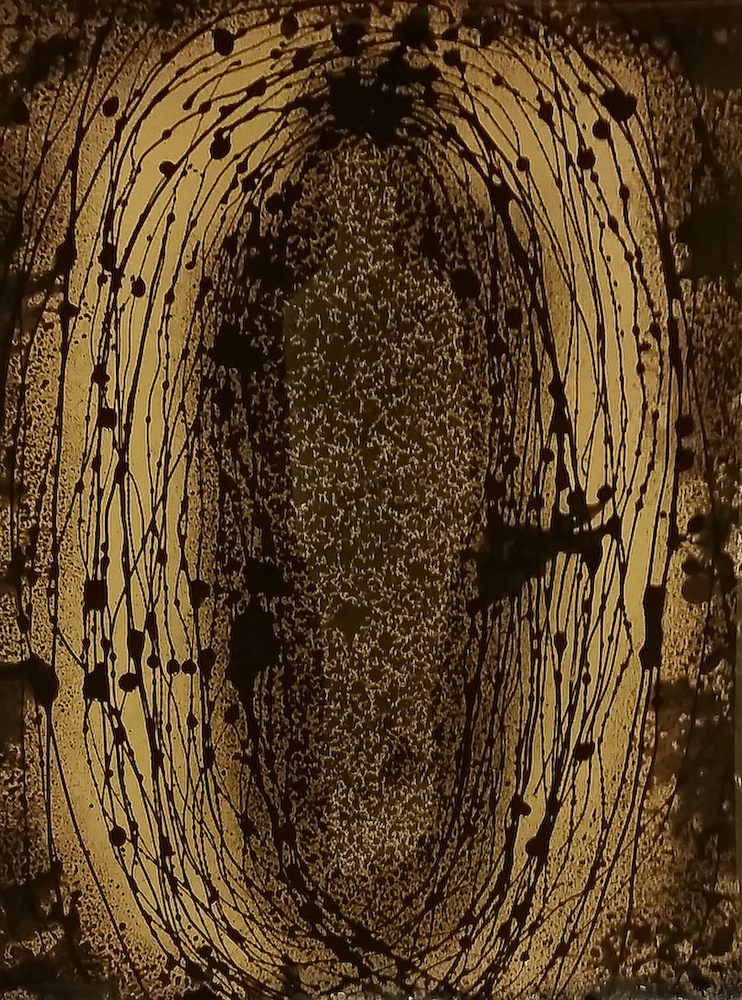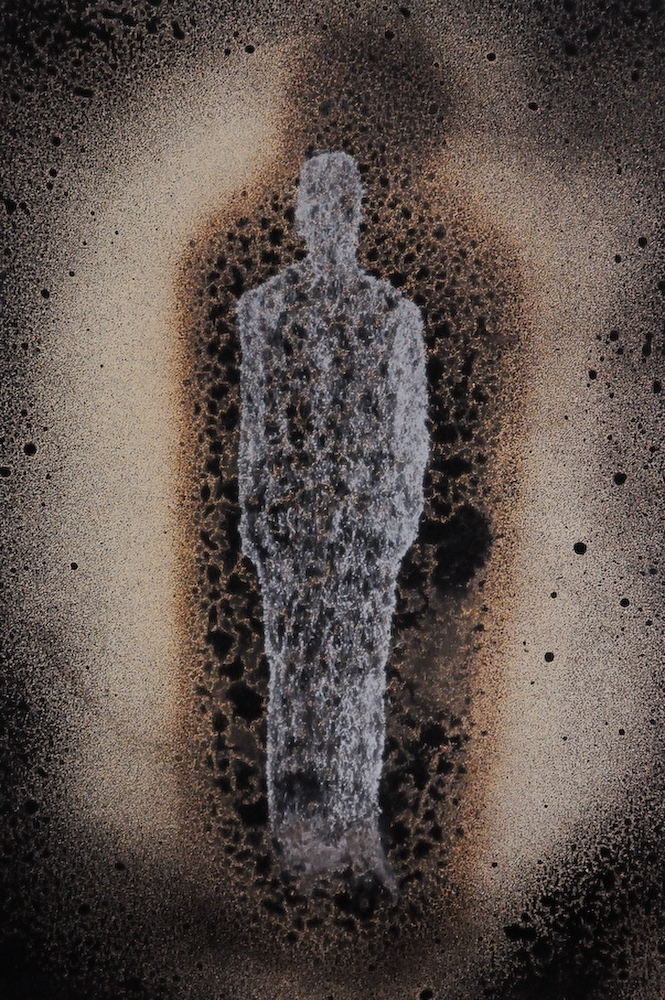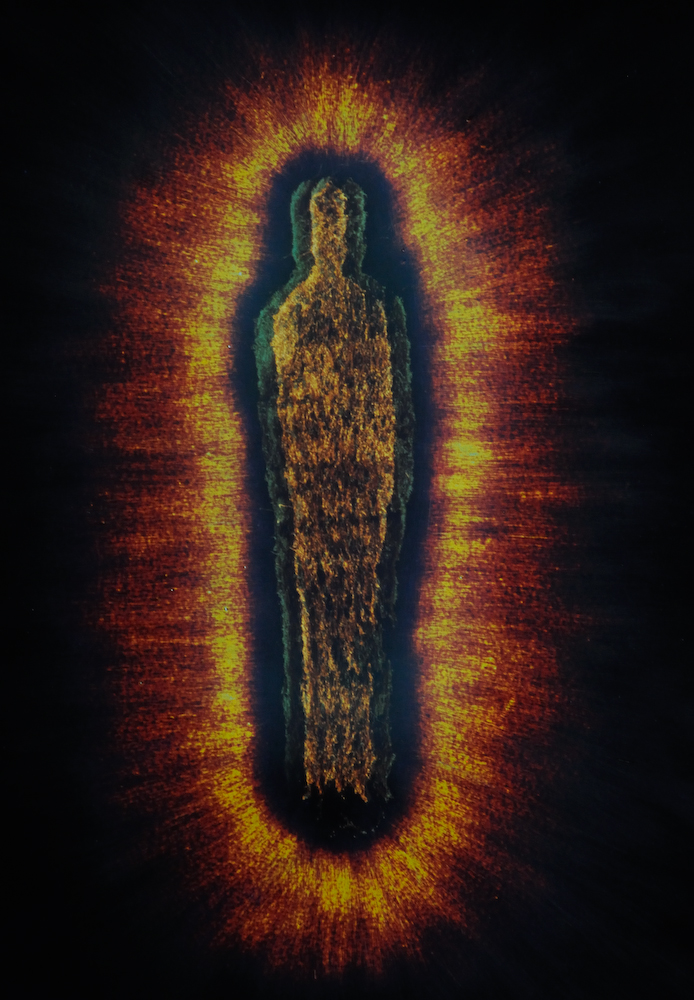The Human Experience Through Alternative Processes: Douglas Nicolson
“One way or another, we all have to find what best fosters the flowering of our humanity in this contemporary life, and dedicate ourselves to that.” – Joseph Campbell
An idea I have constantly grappled with is the idea of humanity. How is it each human being experiences similar events yet each of us is entirely unique? Due to my curiosity about how others perceive this question, I have interviewed artists that use particular photographic processes to dissect the idea of what it means to be human.
Dreamscapes, reality, the past self, and human emotion all play a role in Douglas Nicolson’s work, Manifestations of Spirit. When I came across this work I was astounded by the colors and textures Nicolson achieved in each piece. I immediately was brought into this state of illusion and mystery about the figure highlighted in many of Nicolson’s works and began to consider the importance of figures that appear in our dreams and what their presence may say about our emotional state.
Born in Scotland, Douglas Nicolson is currently based in London, working out of E5 Process Darkroom, where he has a studio. His practice focuses on analogue photographic media and is a mix of personal and socially engaged work and projects. After a Degree in Visual Arts at the University of the Arts, London (First-class honours) he completed a Masters in Community Art Practice (with Distinction) at Goldsmiths University, London.
Alongside working on personal projects and exhibiting in the UK and overseas he has developed socially engaged art projects with the Fiji Arts Council, made artwork with inmates in a prison in the UK, schools in Mozambique, residents of a Romanian homeless shelter, young offenders in East London, communities living with HIV/AIDS in Kenya and service users of a psychiatric hospital.
Manifestations of Spirit
I’m an artist/photographer with a background in participatory, community based projects alongside my personal practice. Raised in a small farming village in Highland Perthshire, Scotland, I have ended up in London after various wanderings. My studio is part of an arts hub that includes E5 Process Photography Darkroom. The darkroom is an artist run non-profit organisation with a remit to promote community access to analogue photographic facilities and I am part of the collective of artists that manage the space.
My personal practice explores photographic processes and photosensitive materials in the darkroom to convey emotional and psychological states. The Manifestations of Spirit series evolved out of projecting old childhood slides and re-entering the frame to interact with past selves which were then rephotographed. This led to an ongoing project that attempts to represent inner emotional states.
I’ve recently turned 50 and at present enjoying coming to terms with the aging process. But 5 years ago at 45 I felt that change into middle age looming. I had a dream that I was sick and out came an amorphous shape covered in mucus. From this birth sac a figure emerged. I have been exploring the symbolic nature of this figure over the few years, aiming to create psychological spaces between dreams and reality. They act as a tool to process my life history and emotional landscape, giving physical representation to what I often don’t have the words to express.
The images are quite layered with processes as they start from a medium format negative of a long exposure of a wire wool maquette figure slowly burning. Wire wool will slowly burn and glow once you add a flame. From this negative I will make prints to use as the base for the chemigram experiments.
The chemigram stage of the process gives each image a uniqueness relating to the ideas/thoughts/emotion I was processing at the time of hand applying with brushes, stencils, stamps and sprays a cycle of dev/bleach/lith redevelopment/bleach/lith redevelopment, with the odd addition of differing chemicals within the mix depending on what is at hand at that time. -Douglas Nicolson
Kassandra Eller: How did your photographic journey start?
Douglas Nicolson: I’m of a pre digital age where I started taking analogue snaps of people and events in my childhood but it was in my 20s when I went to art school and was drawn to lens media that I started using photography as an art practice.
KE: How did you discover alternative process photography? What made you want to experiment with this?
DN: After my fine arts degree I completed a Masters in socially engaged art practice, where I was working on art projects using photography with different marginalised communities where I supported them to represent their own experience. I then went traveling and was shooting digital but found it more and more problematic to document people from different geo-socio-economic circumstances so stopped taking portraits of people. I ended up in Mocambique for a couple of years and started to work with an NGO that ran workshops with local schools. I wanted to use materials available to participants so began with basic analogue chemigrams/pinhole experiments with the class. This got me back into using analogue materials. On returning to the UK, I wanted to learn wet plate collodion as a way of taking portraits but with the sitters active collaboration. The long exposures and set up for wet plate means the sitter has to take an active role in creating the portraits. I joined E5 Process darkroom in London as an intern so I could learn wet plate while helping out at workshops John Brewer was running there as I didn’t have the money to pay for the workshops at the time. E5 Process darkroom is all about the materiality and process within analogue photography and I enjoyed learning and the community vibe so much I now have a studio space in the same building as E5 Process and help run the darkroom as part of an artist collective.
KE: Is there anything or anyone who inspires you?
DN: The title of the series Manifestations of Spirit is in homage to Minor White (1908-1976) and comes from a book about his work. I am particularly drawn to his abstract work.
KE: Alternative process photography allows the artist’s hand to be present in the work. For this project why did you choose this alternative process method and how does your interaction in creating the images affect the meaning of the work?
DN: I like layering an image and alt processes allows the building up of an image through different stages. The work in Manifestations of Spirit is based on long exposures of wire wool machete figures that are set on fire. The image is then printed and reworked through a series of bleaching and redevelopment. Each stage of the process adds another layer.
KE: How do you handle mistakes when using alternative processes? Are there times when an error turns into a piece?
DN: I use stamps, sprays and brushes to apply the chemistry to the images. I also use a variety of photography and household chemicals in the process. This brings in an element of chance and randomness to the application. The mark making and application is also influenced by how I’m feeling that day or the type of image /emotion I’m thinking about when creating the image. It’s all about nudging the image in the general direction that I want it to go and embracing any ”errors”. I have a feel for the general look of applying different chemicals due to repeated experiments, but an element of chance is always present. Sometimes the image works and sometimes it doesn’t. The final images are from an edit of a larger body of work.
KE: Humanity encompasses a vast array of emotions, actions, ideas, and thoughts. How would you describe your work in terms of the human experience?
DN: One of the main purposes of creating the images is to give a physical form to emotion that I find hard to process or don’t have the words to describe. So in terms of the human experience, it is an individual experience but I hope that the images offer a more global representation of feelings/emotions that we all have.
KE: I also use childhood photos in my work and rephotograph myself into these images. In your artist statement, you describe how photographing in this way brings up old emotions/feelings about your childhood. Is it painful to “relive” these memories? Or is there a catharsis in reframing these photos in a new narrative?
DN: I find working with childhood images offers a different way of interacting with personal memories. Re-entering the frame and setting up new dialogs within the image allows release of emotion but also the creation of new conversations between the old and new self.
KE: It seems as though this project has evolved since you first began photographing with childhood slides. Was this shift due to your dream of an amorphous shape? Or did this shift begin earlier?
DN: I’ve been working on the project for quite a few years now as it’s an ongoing personal project. I see it as continually evolving as my inner emotional landscape develops and evolves. The idea of a double image representing inner and outer states has been a constant element but after the dream of the amorphous shape I started to work with wire wool to create and photograph the figure rather than using images from childhood or filmed footage of myself.
KE: This dream is so vital to your project, Manifestations of Spirit, as it puts the framework of this figure into context. Has the dream been a recurring creation or have you had other dreams with this figure in it?
DN: The main initial dream of being sick and vomiting up the amorphous figure is the genesis of the wire wool figures but I have had the figure emerge in dreams since then. Initially the figure was in darkness and covered in a thick liquid reminiscent of old engine oil. Since first emerging the dreams of the figure have gained more light and the figure is becoming more human like in appearance.
KE: This idea of a figure emerging from mucus in your dream is quite ominous. Do you think this form is representative of anyone or anything in particular? Does this figure that came to you in the dream seem like a message or a warning of any kind?
DN: I see the figure as representing the shadow or hidden/repressed elements within the psyche, for me, being a queer man who grew up in the 70-80s, particularly around feelings of gay shame. The images are not negative as such but allow negative and positive emotions or feelings to surface and have some light shined on them. Making the work has a therapeutic value for me.
KE: In many of these images, the form is very clear and precise, however, I notice that in a few pieces the form is obscured by these textures and colors. Was this a purposeful choice to conceal the figure? Why did you decide to obscure the figure more in some images but not in others?
DN: I tend to not have a final vision of what I expect the images to look like on completion. I like how the mix of elements, chemistry and chance coming together and much like painting it’s a matter of deciding when to stop.
KE: To conclude I would like to ask what is next for you. Is there anything you are currently working on?
DN: Since middle of lockdown I have been collaborating with artist Paulene Morphett. We have started to produce work under the pseudonym ”dp collective”. At present we are making large scale composite images using analogue techniques. We are working on an image based on Anubis the Egyptian god of the underworld, who weighed the hearts of the deceased against goddess Maat’s feather of truth.
This has become quite an involved project in terms of materials as we are using ultra-large format infrared sheets of film (up to 46cm x 62cm) which we shoot on an old industrial copy camera then develop in pyro development to extend the tonal range as the film was intended for industrial printing of 2 tone text. Each element within the final piece is photographed individually, this allowing a play of scale between the elements. The elements are contact printed into the final piece using masks to isolate each element against a background image.
Posts on Lenscratch may not be reproduced without the permission of the Lenscratch staff and the photographer.
Recommended
-
Ragne Kristine Sigmond: Portraits of Painterly LightDecember 2nd, 2025
-
Mary Pat Reeve: Illuminating the NightDecember 1st, 2025
-
Ricardo Miguel Hernández: When the memory turns to dust and Beyond PainNovember 28th, 2025
-
Pamela Landau Connolly: Columbus DriveNovember 26th, 2025
-
MATERNAL LEGACIES: OUR MOTHERS OURSELVES EXHIBITIONNovember 20th, 2025

